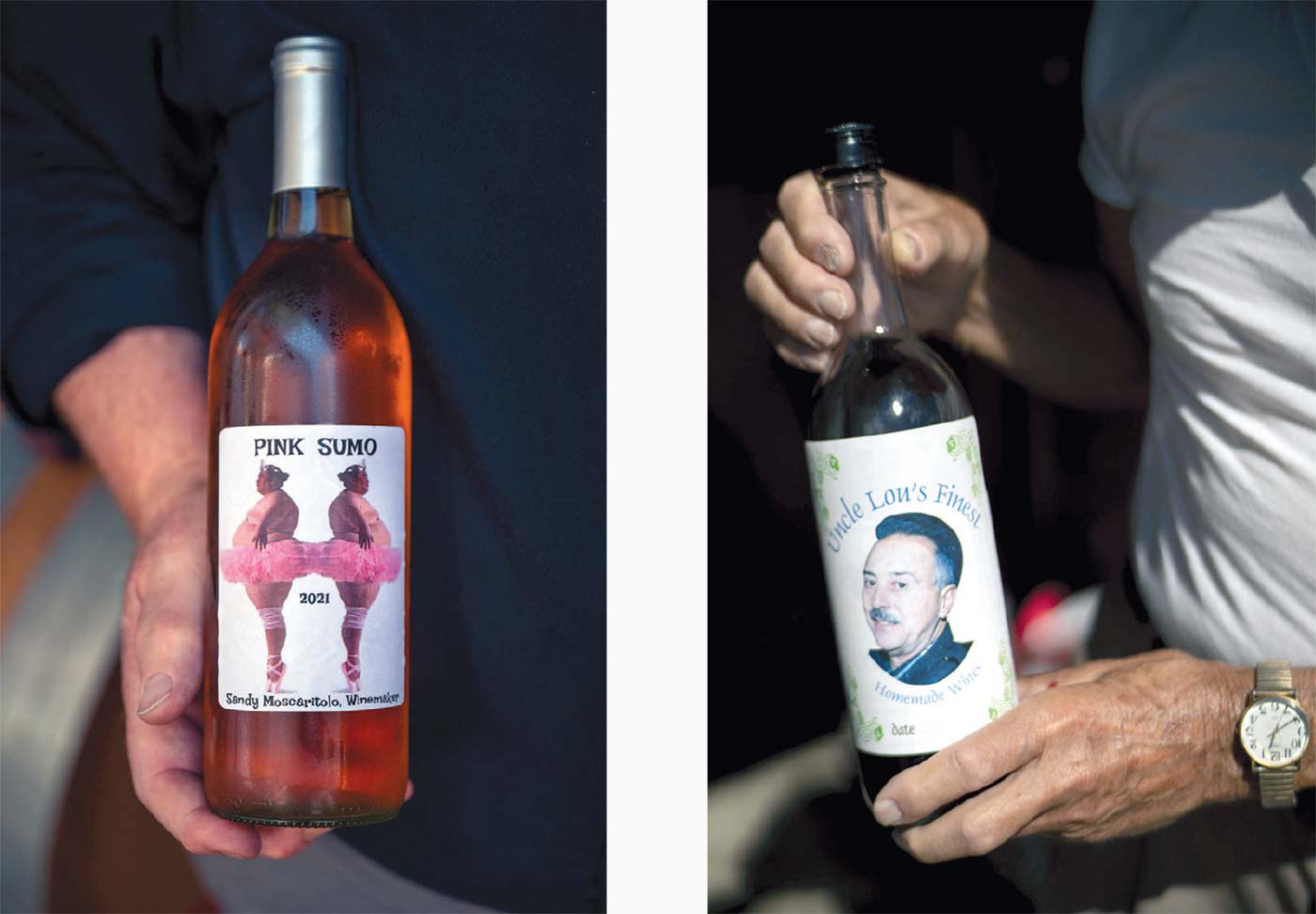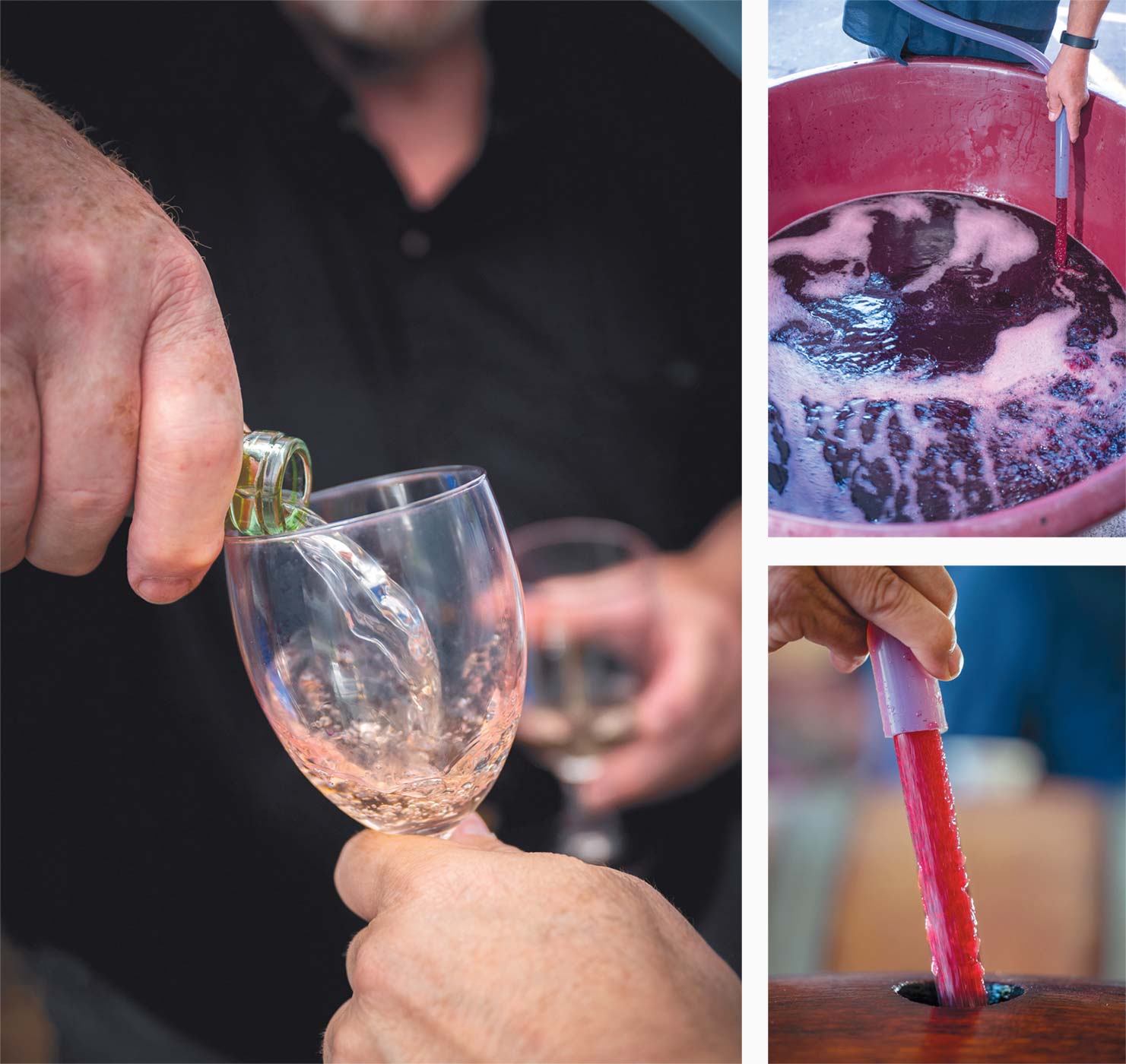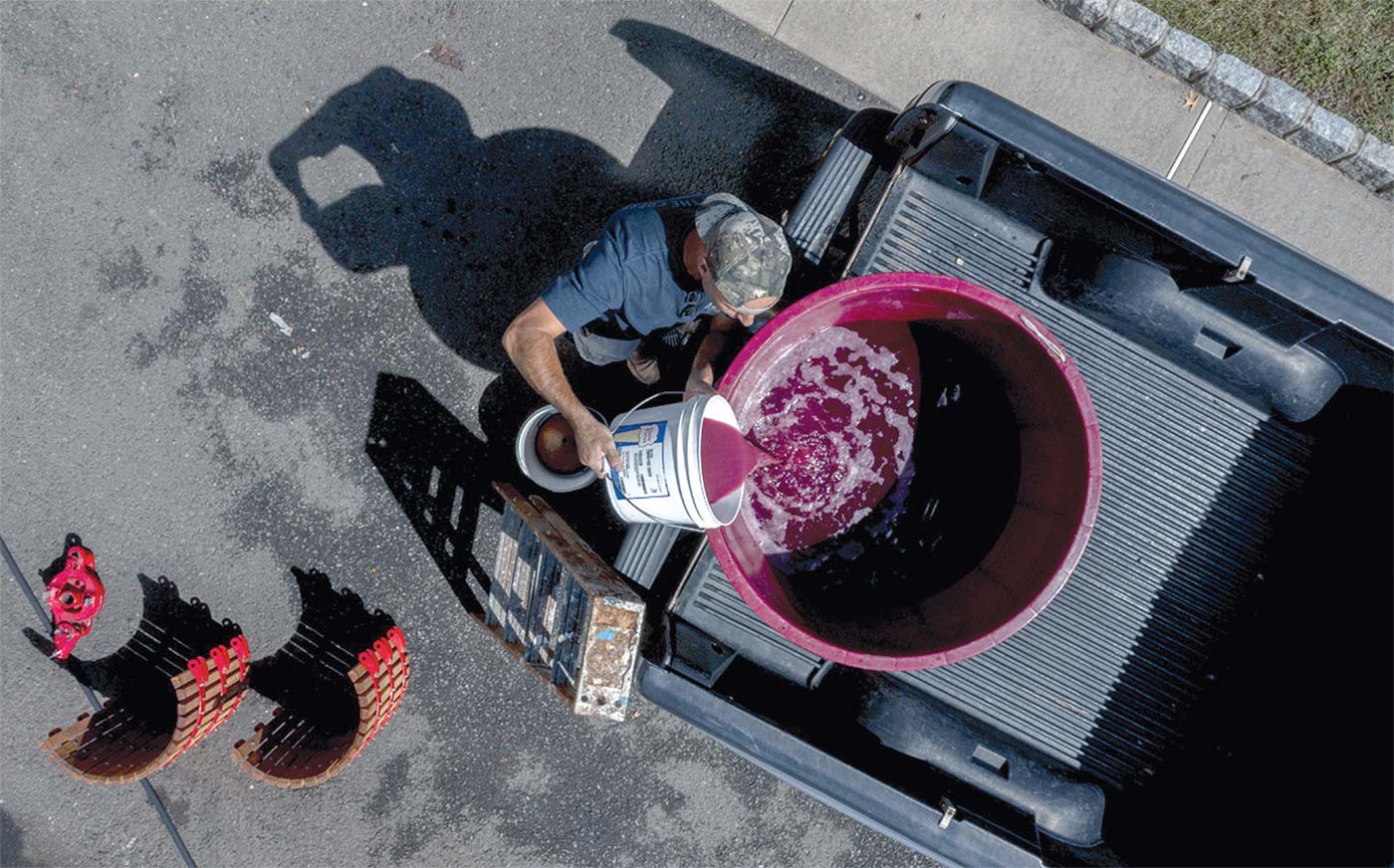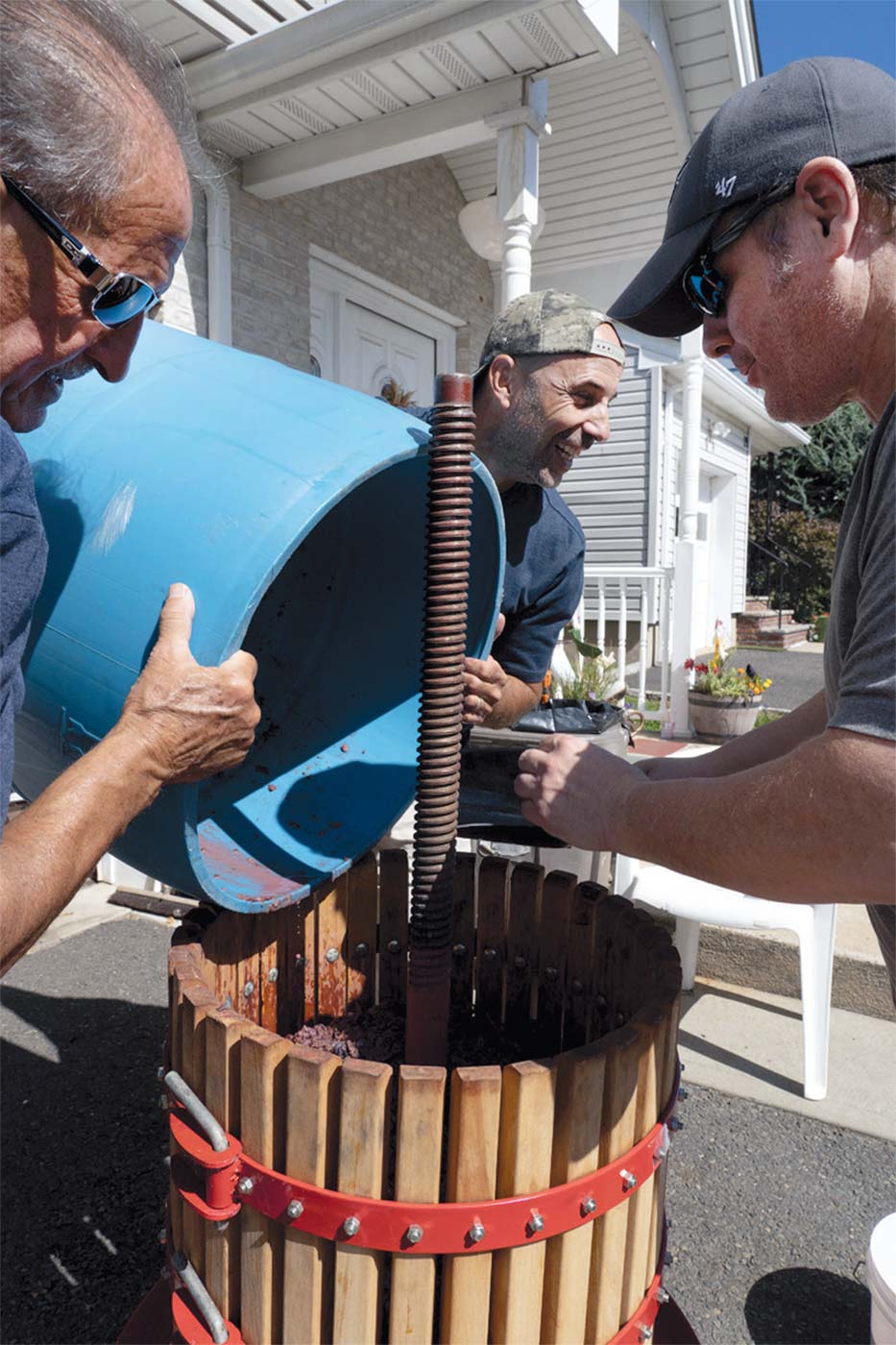Continuing the Legacy of Home Winemaking
Home winemaking has been a family tradition passed from one generation to the next. Who will continue the legacy?
As a kid, you remember the smell on those weekends when the summer was morphing into autumn. And the bees. There were always bees getting their share of the grape juice.
Collecting that juice was a tradition, a ritual, an important task, a gathering, that played out in the homes of many communities across New Jersey where immigrants from different cultures and their succeeding generations lived.
It was the season for home winemaking.
The story of wine in this country is largely an immigrant tale, as is the story of our state. And parts of our history that, at first glance, seem to work against winemaking, in fact, aided it. While the grapes these home winemakers used largely came from California (or the vintners’ own backyards), this is a made-in-New- Jersey story.
For many immigrant families, wine was a daily part of meals and integral to their social fabric. During the great wave of immigration at the turn of the 20th century, there were not a lot of purchasing options. Today’s wine superstores were far in the future, and wine was often homemade. When Prohibition went into effect in 1919, it made the manufacturing, transportation, and sale of alcohol illegal, but did not outlaw the consumption of alcohol. People were also allowed to make wine for personal use, and immigrants fueled the grape-growing industry.
As commercial winemaking came to a near standstill across the country, acreage devoted to grape growing doubled in California within a few years. The varieties planted were typically thicker-skinned and later-ripening varieties—Zinfandel, Carignan, Petite Sirah, Alicante—better able to withstand railcar journeys across the country, where they were ultimately used to make “old school Italian” and other wines that were not necessarily fine wines, but were fine enough.
As Prohibition ended in 1933 and the country endured the Great Depression and then World War II, making wine at home became not just a cultural phenomenon, but a critical and cost-effective tradition along with canning tomatoes, pickling vegetables, and filling the root cellar. This is where the conversations in this piece begin, with the earliest recollections beginning around this time. The dates may be approximate but the memories shared are not.
Lou Raio, 84, has lived in Maplewood his entire life. His grandfather emigrated from Italy and Lou remembers driving with his grandfather and father down to Newark to buy from train cars full of wine grapes. The fruit primarily hailed from California, but grapes from Washington State and East Coast vineyards were also available.
“The railcars loaded with grapes from California would pull into a lot at the bottom of McCarter Highway near Route 9. Every railcar was a different dealer, and my grandfather would walk car to car picking out the grapes he wanted for the price he wanted to pay,” remembers Lou. “It was quite a scene!”
Fast-forward a few decades and, on successive weekends in September, Raio and his son, brother-in-law, grandson, and friends gather for the crush and fermentation. The winemaking operation has happened in the garage and driveway of the Raio home—a house the retired carpenter built himself—every year since 1966, and, before that, in the house in which he grew up.
There are fewer people involved now; some have moved, some have passed away. Raio does not make as much wine these days, and the wine he makes uses grapes that yield a lighter wine than the sturdier grapes of the past. The group still uses the manual press that made the trip from the old house to the new one.
The work takes two weekends, but it is joyful work filled with lively conversation. Family and friends gather around and there is food, a lot of food, to go with a lot of laughs, and the occasional heavy cranking and lifting of the press. Raio’s son, Joe, takes lead on the more challenging physical aspects of the process these days with the guidance of his father.
Taking care to not waste resources has become more valued by the environmentally conscious in recent decades, but it has always been standard practice for people who did not come from much. Instead of buying bottles and having labels designed on the laptop, Raio gets the empties from the sacramental wine at his parish, washes them out, and uses them to bottle his latest vintage.
“I don’t need the fancy labels. I know what’s in my wine: 70% Sangiovese, 30% Grenache.” He also knows he and his family and friends will enjoy it until they are ready to make next year’s batch.

Recent selections from home winemakers. “I don’t need the fancy labels. I know what’s in my wine: 70% Sangiovese, 30% Grenache,” says Lou Raio.

Sandy Moscaritolo (c. seated) leads a rotating group making wine in Elizabeth, where he grew up and has been making wine for 50 years.
The grapes no longer get purchased directly off a railcar from the West Coast but maintaining relationships through direct customer interaction is still the business model at DiDonato and Associates, one of the preferred grape sources for NJ home winemakers. Long managed out of Newark by another Lou, Lou DiDonato Jr., the operation is now based in Elizabeth in partnership with Tony Lopes, owner of Europa Pombalense Supermarket. Lopes’s family, of Portuguese descent, was previously a customer of DiDonato and found they could better serve those in their customer base involved in winemaking by teaming with him.
The business has deep roots in New Jersey. DiDonato’s father, Lou Sr., started selling grapes on a corner under the train tracks in Newark at the age of 14. By the 1940s, the senior DiDonato had set up relationships with growers and established a California operation, selling at its height 200,000 boxes of wine grapes a year. That is enough grapes to make about 120,000 cases of wine. DiDonato and Associates now sells approximately 17,000 boxes of grapes a year.
Lou DiDonato Jr. and his family make their own wine, too, and have a bragging rights contest every year. His sons do not live nearby, but they continue to make wine, which has not been the pattern as families spread out more with each next generation, with less time, fewer hands, and less desire to make wine from scratch.
Convenience is another factor working against the tradition. DiDonato sells cartons of wine grape juice now, which cuts out several messy and laborious parts of winemaking for home vintners. Others buy small kits to make wine at home in limited quantities or sign on with wine schools, facilities that provide the equipment and space and make the supply ordering easier.
DiDonato laments that the home-based winemaking industry won’t last much longer and that even small-scale commercial viticulture and winemaking are at risk. Grapes are grown on an industrial agriculture basis, many of the small growers across the country having sold to a handful of conglomerates. When people mention their wine cellars now, they are often referring to sleekly custom-designed rooms stocked with expensive cult wines, not an in-house production and storage facility, complete with barrels, presses, and all the winemaking accoutrements (and skill set to use it). Wine superstores? They may not have existed 80 years ago, but today is the golden age of wine consumerism, and it is easier to buy wine than ever before.
DiDonato still has a group of loyal customers, like Raio and his family and friends, who want the boxes of grapes. They also want the connection to the past he provides by selling grapes to them and sharing know-how with families that bought from his father and now from him for generations.
When asked if he ever used cartons of grape juice in crafting his wine, Lou Raio laughs. “It’s good to get your hands dirty sometimes,” he says.
“We deliver grapes and get invited to sit down and eat with our customers,” says DiDonato. There is, after all, always food that adds to the party atmosphere of winemaking days—Italian food, Portuguese food, pastas, sausage and peppers, platters piled high with sandwiches, cheeses, charcuterie, antipasto—along with constant chatter. “By mid-summer, I keep my phone on and answer questions about how the different grape harvests are doing, and it keeps ringing right through their winemaking.”

DIDONATO’S FATHER, LOU SR., STARTED SELLING GRAPES ON A CORNER UNDER THE TRAIN TRACKS IN NEWARK AT THE AGE OF 14.

The winemaking operation has happened in the garage and driveway of the Raio home in Maplewood every year since 1966.
Sandy Moscaritolo of River Edge is another longtime DiDonato customer. He leads a rotating group making wine in Elizabeth, where he grew up and has been making wine for 50 years. He describes it as a “passionate hobby,” an understatement when you learn Moscaritolo has won over 130 state and national awards for home winemaking and, after finishing a Rutgers grape growing course this summer, is planning a vineyard space in Bergen County. His group utilizes a carriage house that they have been able to fill with equipment and keep climate controlled, something most homeowners do not envision in the cellars of today.
“The carriage house floor was perfect for cleaning because there were drains already in the middle of the floor,” he explains, a reminder that, if you are considering trying this at home, much of winemaking is cleaning—before, during, and after every step of the process.
Moscaritolo, who at one time made wine with his family and any neighbor who would allow him to help, found a solution to the diminishing interest in home winemaking brought on by diminishing families. He’s assembled a network of likeminded friends over the years with a range of professional backgrounds as well as nationalities. They all have two things in common: an interest in wine and heritages known for winemaking—Italian, Portuguese, Greek, German. The group divides the labor as well as the finished product and gets together regularly, and, yes, there is food. One other stipulation is that everyone must make their own custom labels, one upgrade from the blank bottles or scribbled initials on the top of the cork in the past.

Lou’s son Joe Raio (c) begins the annual grape pressing with relatives Victor (l) and Joe Rajoppi (r).
Co-op groups, like Moscaritolo’s, that are committed to maintaining the traditional method of winemaking, are one hope that this pursuit is not going away forever, just yet. The same goes for the continued interest in winemaking classes and courses. Another hopeful sign is the existence of WineMaker magazine. With over 23,000 readers per issue, their message boards advise over 125,000 winemakers a year. According to the magazine, their readers alone spend $25 million a year on supplies and made over 700,000 cases of wine last year. The publication’s annual judged contest this past April, one of numerous amateur contests throughout the country, had almost 1,800 entries from 48 states and five different countries.
The pandemic also spurred interest in making things at home, and not just sourdough starters. For many, an increased curiosity about getting more deeply involved with wine, including among those without a cultural connection, led to a new hobby that can perhaps lead to something more, or not. For others, it is certainly a sustaining bridge to the past, a return to craft and tradition.
Despite his prediction of the wine grape business someday coming to an end, 83-year-old Lou DiDonato’s view of home winemaking remains steadfast. “We keep it going for my father,” he notes.
His sons likely say the same thing.





